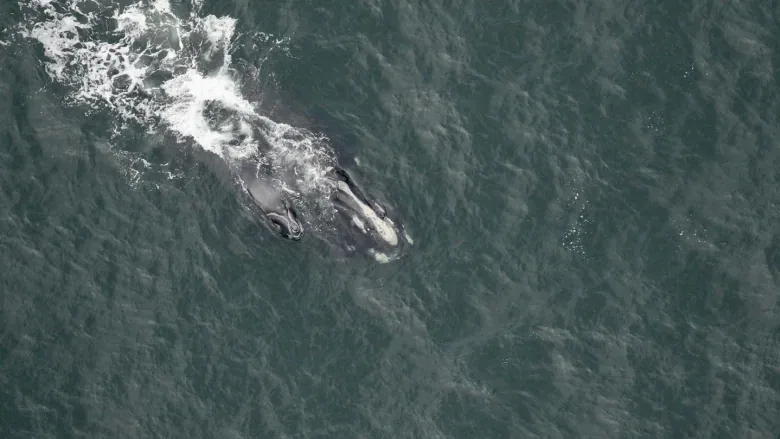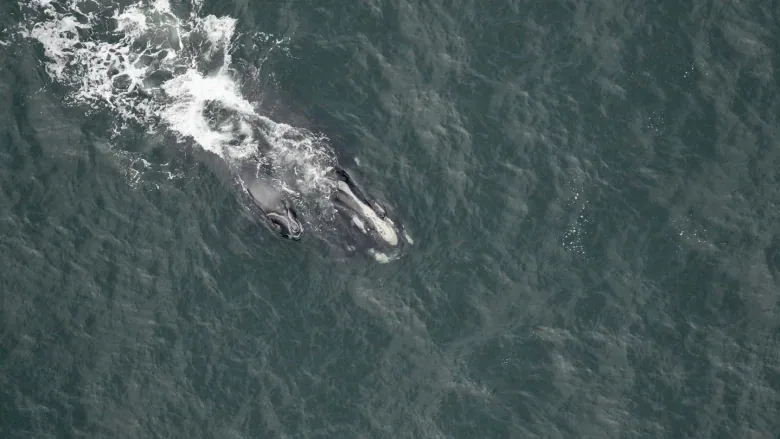
8 North Atlantic right whale calves this season 'encouraging,' says researcher
Eight North Atlantic right whale calves have been spotted off the coast of the United States so far this calving season.
Right whales have their calves between mid-November and mid-April in southern coastal waters.
MUST SEE: Why endangered North Atlantic right whales are given a moniker
"It's encouraging to see," said Moira Brown, senior scientist with the Canadian Whale Institute. "We hope it continues and we hope it starts trending into an increase."
The population has been declining for more than a decade, though the decline has shown signs of slowing in recent years.
There were a record 13 calves born in the first half of calving season last year.
Fewer than 100 potential mothers
The latest population estimate is around 340, Brown said fewer than 100 are potential mothers.

The North Atlantic right whale population was estimated at approximately 340 in the 2021. (Clearwater Marine Aquarium Research Institute, taken under NOAA permit 20556)
"Some of those mothers have been around for several decades. [It's] good to see them still, you know, giving birth to calves," said Brown, who also works with the Campobello Island Whale Rescue Team in New Brunswick.
The New England Aquarium records all mother and calf sightings in a blog post, with information about the mothers' ages and histories – like how many years since they last gave birth, or previous human impacts such as entanglements.
Some of this year's calves were born to mothers older than 30. Brown said it's not uncommon and there's no evidence of age deterioration in right whales or other large whale species.
WATCH: Tangled right whale spotted with newborn months after rescue efforts
Time between births getting longer
"It's fascinating," Brown said. "I've been doing this for 37, 38 years now and some of these whales I've seen when they were calves … now they're mothers and grandmothers."
DON'T MISS: More than 2,000 wild species face risk of being wiped out in Canada: Report
Female right whales can have a calf every three years. But Brown said that interval has been getting longer in recent years.
"We believe part of it is due to stress from entanglements. It could also be from stress in their environment, noise for example," Brown said.
The population has also gone through a substantial habitat shift in the last decade, with whales now being seen in the Gulf of St. Lawrence in the summer. Brown said much of their research operation in the summer months now happens there instead of the Bay of Fundy.
This article, written by Brooklyn Currie, was originally published by CBC News.









